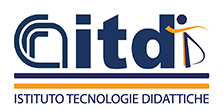MOTILL
The MOTILL “Mobile Technologies in Lifelong Learning: best practices” is an one year project funded with support from the European Commission within the National Lifelong Learning Strategies (NLLS) – Transversal programme – Key Activity1: Policy Cooperation and Innovation of the Lifelong Learning Programme 2007-2013. The project begins on 1st March 2009. The key concepts in MOTILL are Lifelong Learning and Mobile Technologies.
The MOTILL project investigates how these technologies may impact on the diffusion of a social model where the learning as well as the knowledge is accessible for all, regardless of social and economic background, age, sex, religion, ethnicity or disability. Thus, the project will address the need to make explicit connections between learners’ (and potential learners’) everyday uses of mobile devices and how these tools can enable them to exploit learning opportunities, either to pursue formal qualifications or for informal learning. The widespread diffusion of mobile technologies in all EU countries offers an opportunity to develop policies aimed at participation and social inclusion, considering that the use of mobile devices transcends age, social status, economic level, gender and ethnic origins. Although the scientific community has highlighted that mobile learning could be a suitable methodology to support Lifelong Learning (LLL), national policies have not yet taken any significant steps to integrate LLL and mobile technologies. The MOTILL project aims to promote this type of integration.
 Italiano (Italia)
Italiano (Italia)  English (United Kingdom)
English (United Kingdom) 

